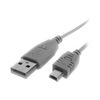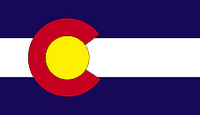
We love our electronic gizmos and gadgets, but sometimes they seem to frustrate us more than they should. John C. Dvorak recently wrote about
the things that frustrate him with PCs: the proliferation of
USB cables and power adapters.
He writes:
Why, for example, do we have so many variations of USB cables? One side is always the same—the side that attaches to the PC. It's always a standard rectangular USB connector, and it plugs into any computer you like. But on the other end, the connector is always different.
I had previously asked
why don't we have USB ports on ham gear? The amateur radio equipment manufacturers have been slow to adopt USB (that is putting it mildly). USB has really helped drive standardization of PC interconnect and should be expanded to most things electronic. This is already happening but now we have the potential of too much "innovation" on the non-PC end of the cable. Apple has their own proprietary connector on the iPod, some digital camera manufacturers go their own way....mobile phones often have proprietary connectors, too.
The other problem that Dvorak mentions is the proliferation of AC power adapters ("Wall Warts"), all with different secondary plugs and many of them missing labeling on what electronic gizmo they will power.
Is it asking too much to label power supplies with the name of the device
they work with? I have a box full of generic-looking power supplies, and
they're all labeled with the name of the random electrical company that made
them. I have no clue what devices they actually belong to.
Interestingly, the USB standard may be the answer to much of the wall wart problem. You may have noticed many devices that use USB for data interchange also charge their internal battery via the USB port. In fact, you can now buy
wall warts with a USB port on them so that power can be supplied to these devices. (I bought one of these to charge my iPod when on the road.) Of course, the same concept can be applied to a car charger that uses the 12V cigarette lighter plug to drive USB-powered devices.
According to
Wikipedia, the USB specification provides for a 5V power supply with of 100 mA current, initially. A USB device can request more current in steps of 100 mA, up to a maximum of 500 mA. Many USB host devices will always have 500 mA available. With half of an ampere of current at 5 Volts, 2.5 Watts can be delivered via the USB port. This is not a huge about of power, but it will handle many portable electronic devices.
The end of the USB cable that connects to a computer is called the "Type A" connector, while the other end is "Type B". There is a smaller version of the B connector, called "Mini-B', which is being deployed on small devices such as mobile phones and digital cameras. (The regular B connector is too large for micro-sized electronic gadgets.) The figure at the top of this article shows a cable with a Mini-B plug.
So there you have it...imagine a world where the mobile phones, MP3 players, handheld transceivers and digital cameras all used the Mini-B USB plug for data and power. You could go on a trip with only one power adapter that fit all of them.
Nah, that would make too much sense.
73, Bob K0NR
 The ARRL has withdrawn the petition to the FCC which calls for "Regulation by Bandwidth" (RM-11306) in the Amateur Radio Service.
The ARRL has withdrawn the petition to the FCC which calls for "Regulation by Bandwidth" (RM-11306) in the Amateur Radio Service.



